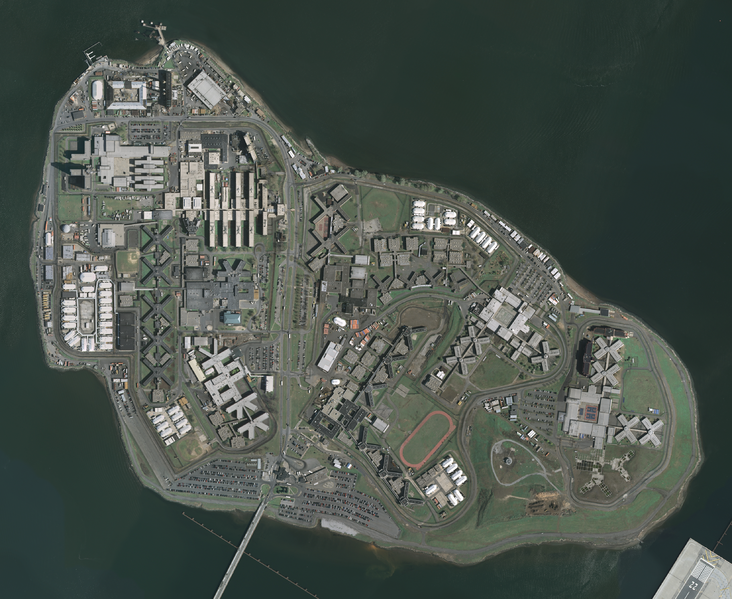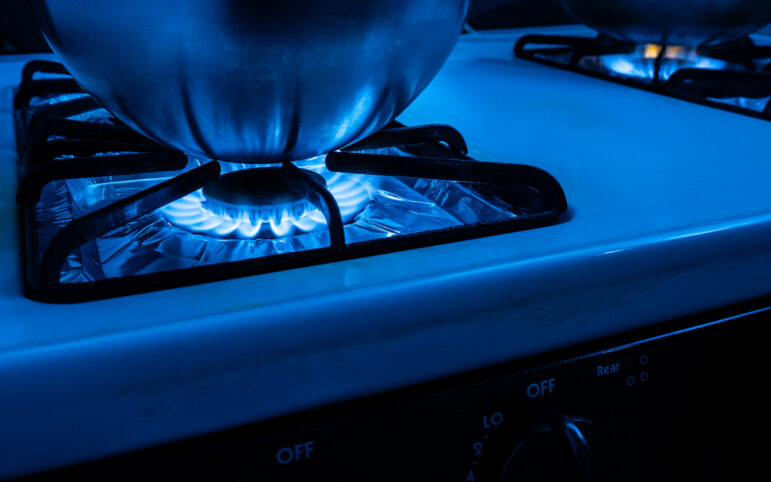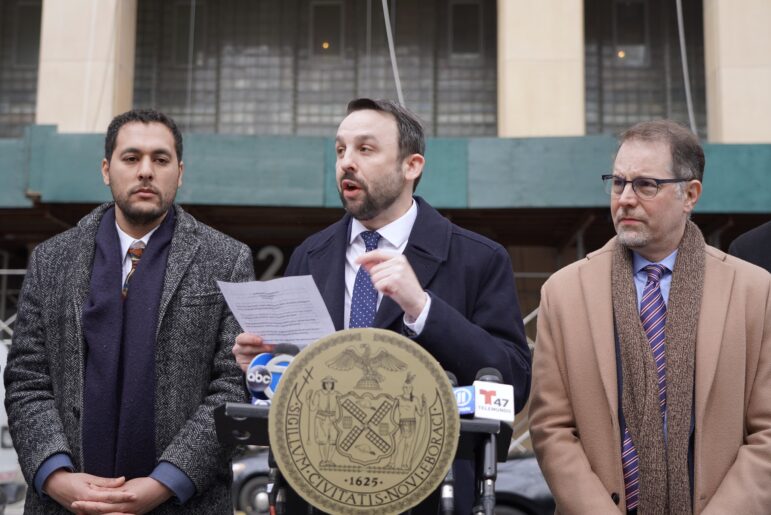‘We can indeed come back stronger. But this moment at history requires more: It needs us to be better than our past self. Renewable Rikers is how we improve the soul of our city.’

USGS
‘With the prospect of a Biden administration executing an ambitious plan to fight climate change, we can create jobs for those who need them most in one of the least expected places: a renewable energy hub on Rikers Island.Look, we can litigate whether New York City is “dead,” “over,” or “gone” until we’re blue in the face. Or, we could finally have an adult conversation on what the city looks like after this crisis. Because, let’s face facts: New York City always sees it through.
That’s been true no matter what terror attacks, viruses, or whatever else brings. Did the New York we knew before those catastrophes come back the exact same way? Of course not, but we still boasted more than 66 million tourists in 2019 — so obviously we still did something right.
So let’s instead focus on how clean energy can help lead the newly envisioned New York. Just as manufacturing was replaced by a widening finance industry after World War II, which in turn has been replaced by the tech sector after the Great Recession, jobs in renewable energy can be the industry that brings us back stronger.
With the prospect of a Biden administration executing an ambitious plan to fight climate change, we can create jobs for those who need them most in one of the least expected places: a renewable energy hub on Rikers Island. New York City can have the future it deserves if we are bold enough to confront this flashpoint in history by fixing the shortcomings of our past selves with a fairer, cleaner future.
Because right now Rikers Island has sadly survived every past iteration of New York. When the rest of the city went through historic changes, this plot of land carried on as a house of horrors. As we removed tenements over 80 years ago, we landfilled Rikers to its current 413 acres — where every day detainees often not convicted of a crime breathe in toxic methane gas from the rotting garbage and decaying ash that make up this land.
And on either side of the East River from Rikers, we haven’t moved to close the dirty “peaker” plants that kick on in Black and Brown communities when white neighborhoods need more electricity. No, this was forgotten every time fate has hit “reset” for New York City. While our City has thrived in recent years, children in the Queensbridge Houses, America’s largest public housing complex, have choked on toxin-filled air coming out of one of the state’s dirtiest plants.
This is the story of western Queens and the South Bronx, home to many of those men and women sitting on Rikers for months at a time, where federal dollars are low but the asthma rates are high. These are the neighborhoods where cops are used as a Band-Aid for every problem. As New York has always come back stronger, with the bravado of the richest city on Earth, these neighborhoods have been weakened.
Even today, at the former epicenter of the COVID-19 pandemic, an energy company seeks to build a new peaker plant in my native Astoria, Queens. We know now this virus struck neighborhoods like ours because our predecessors did little to stop peaker plants or the pollution they brought. Yet the construction of this new facility will marry us into more fossil fuel infrastructure — no doubt leaving another generation of diverse children behind in a silent public health crisis.
 CityViews are readers’ opinions, not those of City Limits. Add your voice today!
CityViews are readers’ opinions, not those of City Limits. Add your voice today!
Or, we can take the bold step to tear down those jails to make way for solar energy generation and storage, along with other 21st Century infrastructure. This will be the downpayment on a new green economy. The median annual salary for solar installers is $52,880, which could be a stepping stone for a public housing resident whose average family income is $25,007. Emerging technologies have the opportunity to lift all boats, but only if policies are in place to make sure no one sinks. It’s imperative these jobs we create on Rikers go to the communities most marginalized by what Rikers represents.
Such a project will also finally allow us to close those dirty power plants. Afterall, many were built 20 years ago based on bad policies and scare tactics — against the protests of those who lived near them. Renewable energy on Rikers will finally justify their closure. New Yorkers pushed to the margins will finally get a say in what their community looks like.
We can indeed come back stronger. But this moment at history requires more: It needs us to be better than our past self. Renewable Rikers is how we improve the soul of our city.
Costa Constantinides represents western Queens’ “asthma alley” in the New York City Council, where he serves as Chair of the Committee on Environmental Protection.









3 thoughts on “Opinion: Want to Re-Think New York City? Start with Rikers Island.”
I don’t think that NYC really needs to be re-thought post-pandemic. Once a vaccine is developed Covid-19 will fade from people’s memory. Not to minimize it but NYC’s 19090 Covid-19 deaths only equals 0.227% of the entire NYC population of over 8 million.
NYC’s bigger problem is that employees working from home (WFH) seem to like it very much and may resist coming back to their offices. It’s too early to tell how many employees will return to NYC’s office buildings. The huge increases is street crime, endless protests and rioting under deBlasio are convincing more employees to continue with WFH, especially higher paid suburban employees tired of the LIRR, NJT, MNRR and the PABT.
Costa should be voted out. He is part of DeBlasio administration supporting criminals with disregard to law abiding citizens and public safety. They all rushed to close Rikers, emptying jails to the number they needed. Quality of life in NYC deteriorated, lewd acts on streets and subway, increased crime. Bail reform doesn’t help either, how many times a criminal keeps being arrested and released. No bail should be for first time non violent offenses only. We’ve seen whats happening with homeless drug addicts and former Rikers detainees placed in hotels in residential neighborhoods. Costa voted to build borough jails in residential communities within a block from schools and homes. Costa doesn’t deserve to be in office, just like many city politicians who keep advocating for criminals, instead of the people who actually support the law, pay taxes play by the rules. Why on earth we have to build new jails when we need more mental hospital beds, we want public safety to freely walk to work, without fear of being robbed, stomped on, raped or beat up senseless in random attacks.
Riker’s is a detention center, the majority of detaineess there are pre-trial and have not had the benefit ot due process. If they are low-income they are not able to bail out (see the Khalif Browter story, Exonerated 5 and more).
Now let’s just talk about the economics, shall we?
[from Wikipedia]
The complex, operated by the New York City Department of Correction, has a budget of $860 million a year, a staff of 9,000 officers and 1,500 civilians managing 100,000 admissions per year and an average daily population of 10,000 inmates.[8] The majority (85%) of detainees are pretrial defendants, either held on bail or remanded in custody. The rest of the population have been convicted and are serving short sentences.[9]
According to a study done in 2015 by the Vera Institute of Justice, it costs the city approximately $209,000 to detain one person for one year at Rikers Island.[10]
Is $209,000/year per inmate acceptable to you? At that rate you could put almost afford to put each detainee up in a 3000/month apartment and hire full-time security 1-on-1 to guard each one.
Is that acceptable to you? At a minimum you should see that it’s not an effective use of your tax dollars. We can do better.